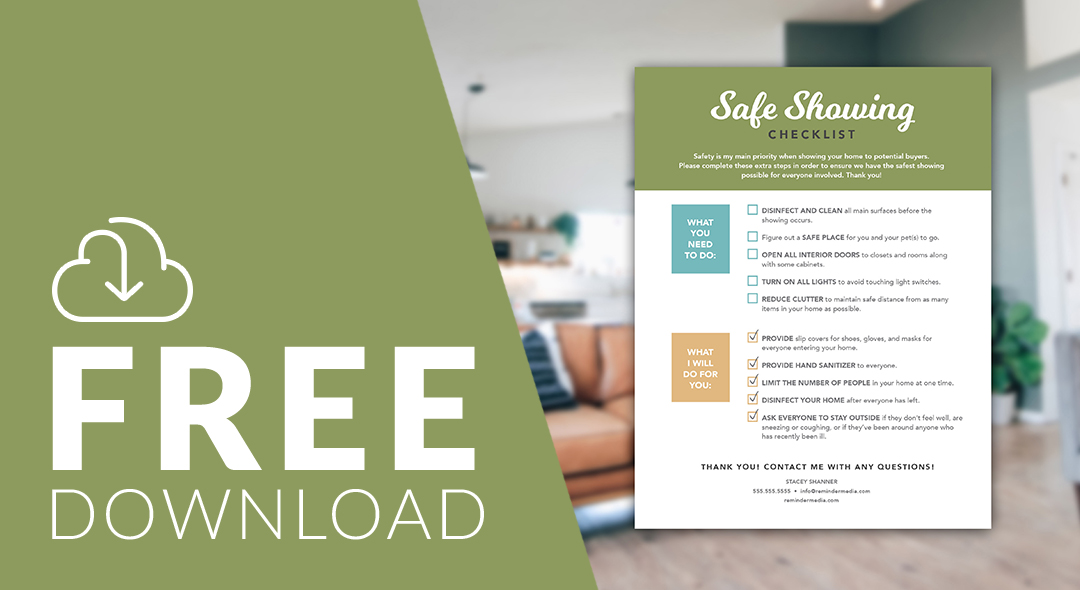As we approach the first year anniversary of the COVID-19 pandemic, it seems like a good time to stop and reevaluate the past year and the lessons that we have learned. The industry experienced significant uncertainty and negative impacts early on, then responded with significant changes and adaptations, leading to a year of unprecedented and unexpected activity and growth.
Of course, we are not in any way ignoring or dismissing the devastation wrought by the events of the past year, including the lives lost and the devastating financial effects on many Americans. This is simply a review of the business-related effects on the real estate industry in particular—and on real estate markets in general.
Positive effects of the last year
For real estate agents and brokers, 2020 began with fear and trepidation about the long-term effects of the shutdowns mandated in communities and countries around the world. This unparalleled disruption occurred just as the spring market was heating up, leaving buyers and sellers in the lurch and right in the middle of transactions. However, the industry responded with exceptional resilience in the face of these setbacks, paving the way for a year of extraordinary industry activity and client service.
 Unprecedented opportunity
Unprecedented opportunity
Record low interest rates, which were implemented as an early attempt at economic stimulus, led to outsized levels of buyer demand. However, the uncertainty presented by the economy and the fear for personal safety meant that many sellers were reluctant to put their homes up for sale. This led to multiple-offer situations for even the most modest listings and incredible opportunities for those homeowners who were willing to take the plunge.
 Growth in rural and suburban markets
Growth in rural and suburban markets
Unlike many hot real estate markets, this one was not confined to city centers and fashionable high-rise condominium communities. As buyers sought a sense of security in the wide open spaces of outer suburban and rural communities featuring larger lots, more spacious homes, and more opportunities for outdoor living, increases in market value were shared with property owners in secondary and tertiary markets, as well. Subsequently, as work-from-home policies were extended permanently, many more Intown residents began to reimagine their lifestyles in these more affordable and more remote markets.
 Extraordinary increases in home equity
Extraordinary increases in home equity
As demand increased and bidding wars broke out, home valuations were indicating unexpectedly high levels of home equity. While this was seen as an incentive to sell for some homeowners, for others it provided the opportunity to refinance at record low interest rates or to perfect an existing property by borrowing from those newly freed-up sources of renovation funds.
 Expansion of virtual marketing and transaction services
Expansion of virtual marketing and transaction services
One of the reasons that so many people feared a devastating downturn in the real estate industry was its previous reliance on face-to-face networking, open houses, and in-person tours. However, real estate professionals quickly got up to speed on virtual tour technology, posting walkthroughs on Facebook Live or hosting virtual open houses through Zoom.
Virtual transaction management and e-signatures became the order of the day. Meanwhile affiliated industries, like lenders and title companies, followed suit, implementing new policies in order to facilitate hands-free, remote closings.
Negative effects of the last year
Aside from the devastating personal toll taken by the global pandemic, on the real estate front, some aspects of the last year’s wild growth caused uncertainty and frustration. Hopefully, as vaccines become more available and The New Normal begins to return to something that looks more like business as usual, many of these negative effects will be ameliorated.
 Frustrated buyers
Frustrated buyers
Many buyers eager to take the plunge into homeownership were frustrated after participating in dozens of multiple-offer situations and experiencing the heartache of losing out in tough negotiations time and time again. For some, this resulted in a delay of their home purchase plans while others shifted their attention to different markets or to alternatives like new home construction. As a sense of normalcy returns and homeowners are reassured that they will find a new home to move into, low inventory should ease in many markets, allowing these buyers to reboot their home search.
 Weakness in urban and multi-family sectors
Weakness in urban and multi-family sectors
As homebuyers fled to the wide open spaces of rural and suburban markets, they left behind condominium communities and in-town neighborhoods that were suddenly seen as overpriced and less desirable. In addition, permanent work-from-home policies made proximity and a short commute seem less critical. Now, however, frustrated home buyers are setting their sights on the greater availability they find in these communities while the young professionals who have been quarantining with out-of-town family members appear to be contemplating their return post-COVID.
 Fears of a real estate bubble
Fears of a real estate bubble
As home valuations reached record highs in some markets, economists and homeowners alike began talking about the possibility of a real estate bubble set to burst. While this has been largely debunked, it is a reminder that buyers should avoid being swept up in the excitement of a multiple-offer situation and convinced to overpay for a home or to purchase more home than they can afford. As with so many things, taking the long view and emphasizing a data-driven approach is the best protection against temporary market adjustments.
Since the only thing that’s certain is uncertainty, it is more important than ever for real estate professionals to ensure that they are staying abreast of the latest developments, both in their market and in the industry at large. Additional training and professional development, along with collaboration and virtual networking, offer the opportunity to meet the challenges and opportunities of this and every real estate year with confidence.
























